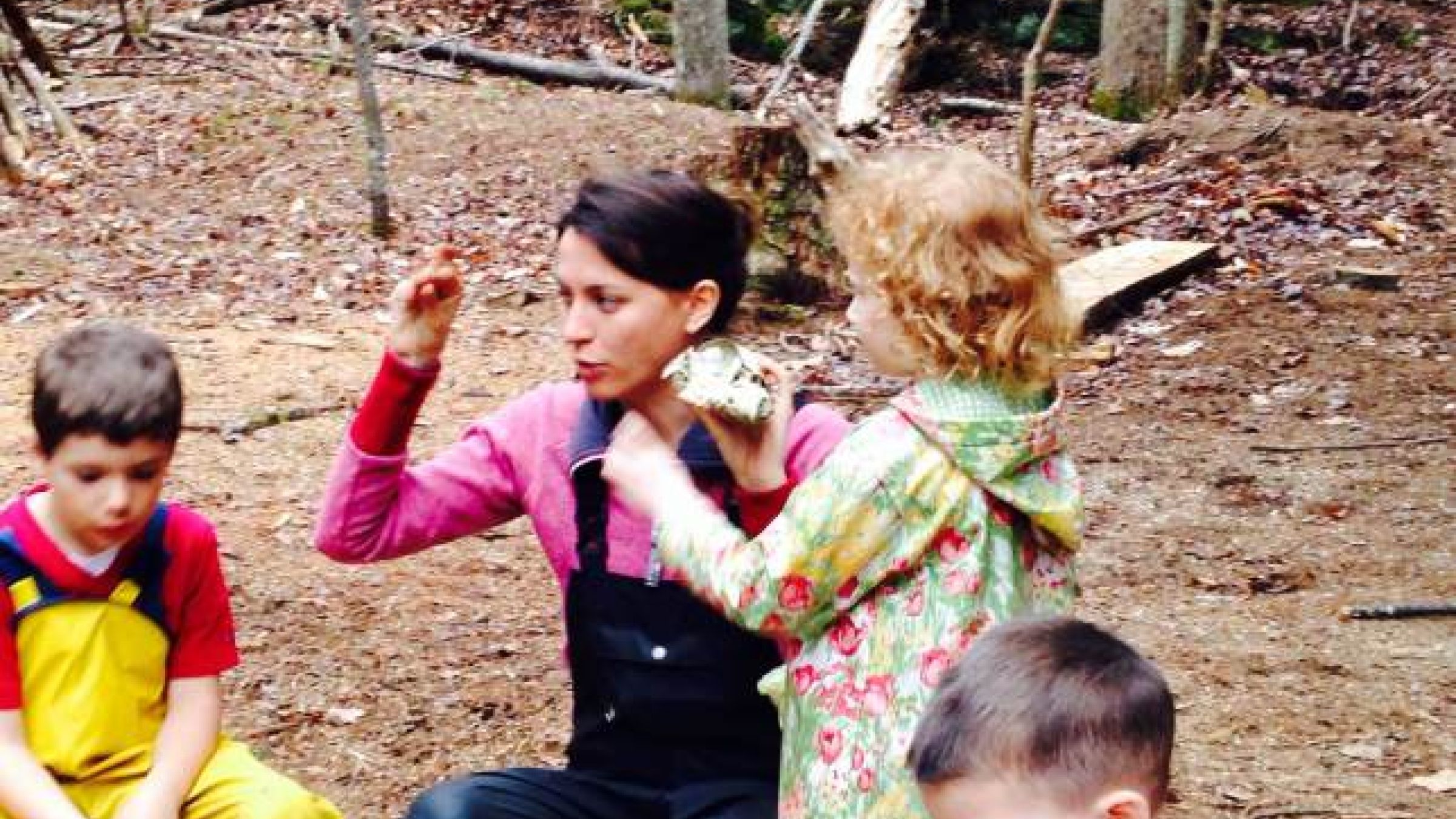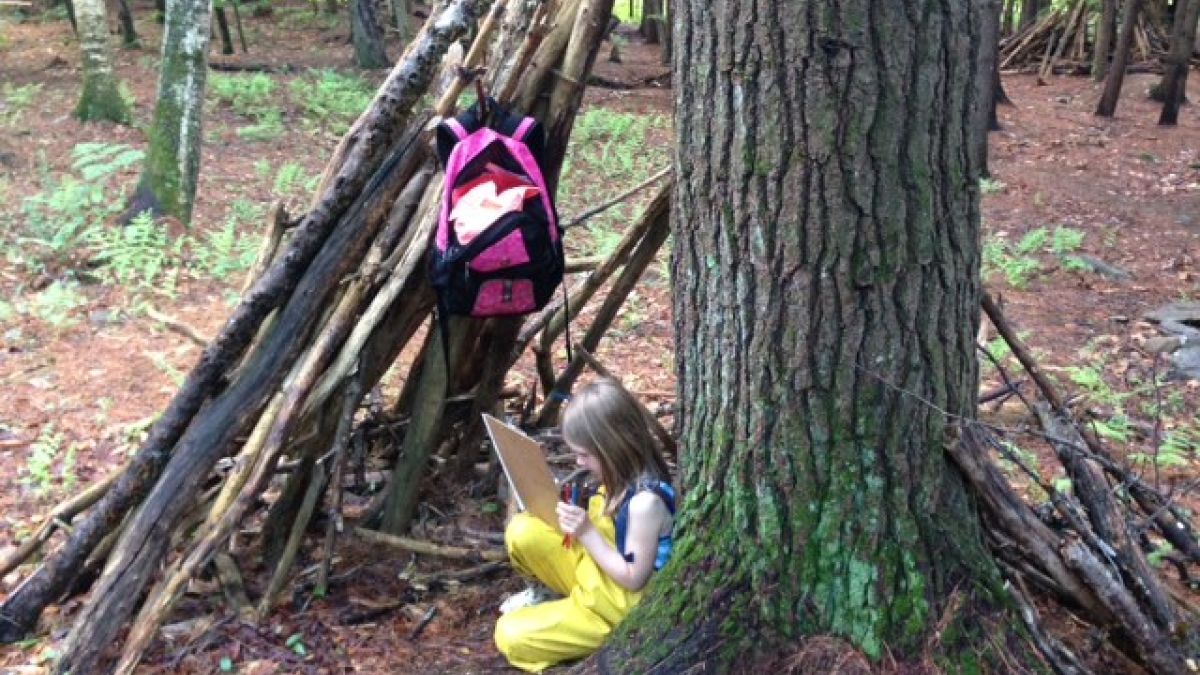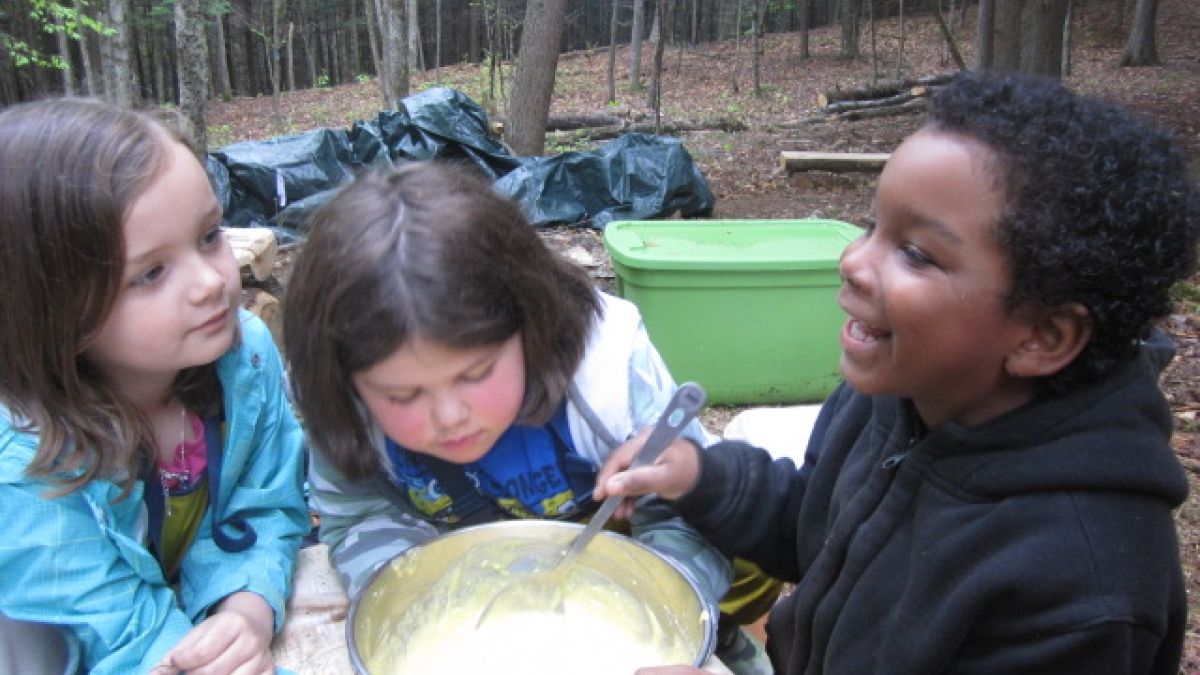
Eliza Minnucci is a kindergarten teacher currently on hiatus from the classroom to raise her two young boys. In 2013 she founded a public school kindergarten Forest Day program and now team-teaches and leads professional development to help other teachers take their students outside for frequent and extended nature-based play and learning. We were naturally curious to find out more about her experiences! Check out her interview with us below and visit her website, forestkinder.org, for more insight into her work.
Tell us how you got started with Forest Fridays and Forest Days. What inspired you?
While teaching kindergarten at the Ottauquechee School in Vermont, my principal screened the film School’s Out for any interested staff. Documenting a Forest Kindergarten in Switzerland, the film showed five year olds who were remarkably independent and confident. I wanted that for my students. My principal encouraged me, and with the help of Meg Teachout, a former teacher intern in my classroom, we began a one day per week in the woods program for my class. I hoped that, by committing to frequent and extended time in nature, I would help my students find more joy at school and become better readers, mathematicians, scientists and friends.
We soon settled into routines that haven’t changed much in the six years since. Though we now only work part-time, as we each have young children, we are connected with many public school Forest Day programs that follow a similar model. We begin with movement, sit-spots, and an active morning meeting. This is followed by play, which stretches for at least an hour. This period may include teacher offerings but typically students wholly direct their time. Then we gather for snack and spend some teacher-directed time in small groups on nature-inspired and standards-related work. We conclude with a read-aloud at lunch and may even fit in some additional play time. Our routines are directly inspired by our favorite handbook, Coyote’s Guide to Connecting with Nature, by Jon Young, Evan McGown, and Ellen Haas.

Image credit: ForestKinder
Did you run into any obstacles, and what helped you to continue with the effort?
We were successful with finding support for adding a forest day teacher one day a week. Having a teaching partner who was invested in the work with me was crucial. It can be difficult to create routines, lessons, and expectations for a wild space after years in a classroom setting. Meg and I could take turns "stoking the fires," as you might say.
Though no obstacles ever really threatened to overwhelm us, that isn’t to say it was easy. It poured, it was often below freezing, and someone had to empty the bucket toilet each week. But it turned out that the Forest Day was better and more self-sustaining than we had even hoped, both for students and for teachers. After my first Forest Friday year, my students’ reading scores were slightly better compared with my previous year’s class. Grandparents were interested in volunteering. Parents were excited by their children’s enthusiasm for school. Then other teachers from other schools got in touch. These teachers, some who were feeling compelled to leave teaching altogether, rediscovered their passion for authentic relationships with students and for emergent, hands-on learning.

Image credit: ForestKinder
Can you give advice to folks who want to start Forest Days in their school?
Meg and I have written A Forest Days Handbook to represent what we’ve learned over the years in terms of nitty-gritty details. I quote Meg all the time: “Try it. Just try it.” Take a step out the door and have a read-aloud in the field or a snack beneath a tree. Find an enthusiastic partner, perhaps a retiree, parent, or student-teacher. Take small steps toward a wild space, and before you know it, when you turn around, the school won’t even be in sight!